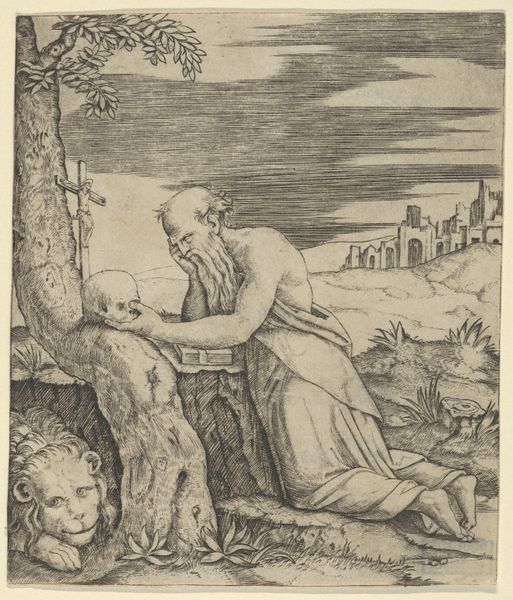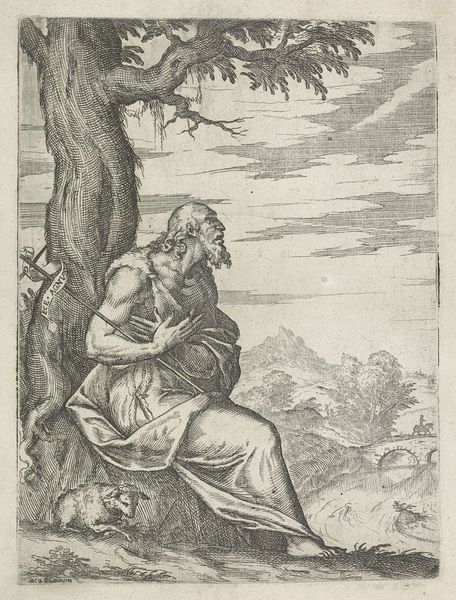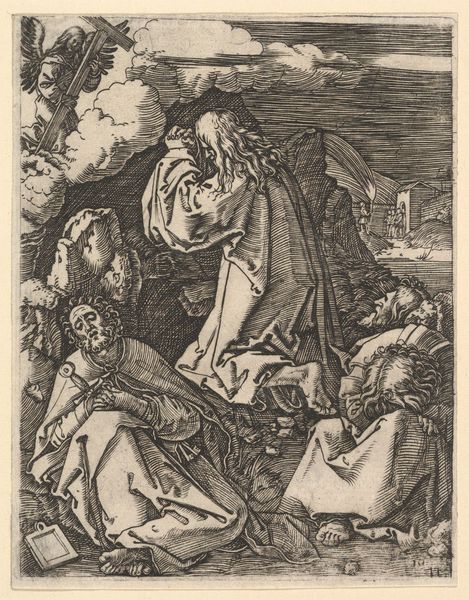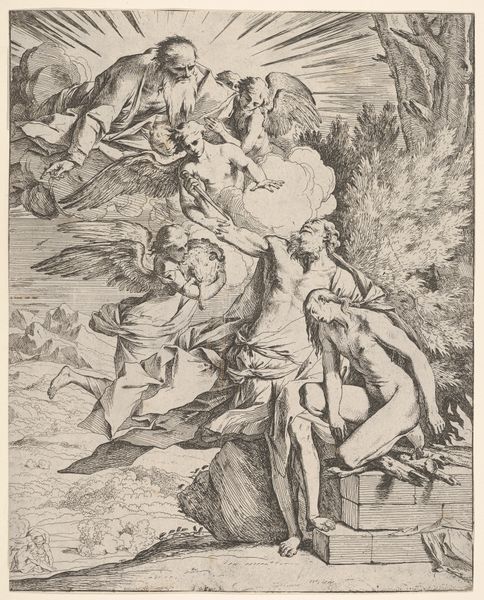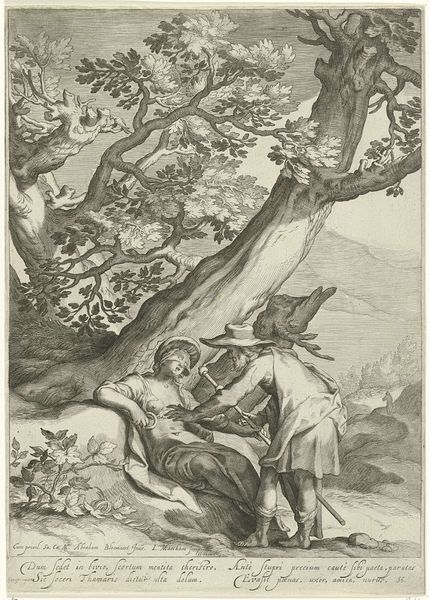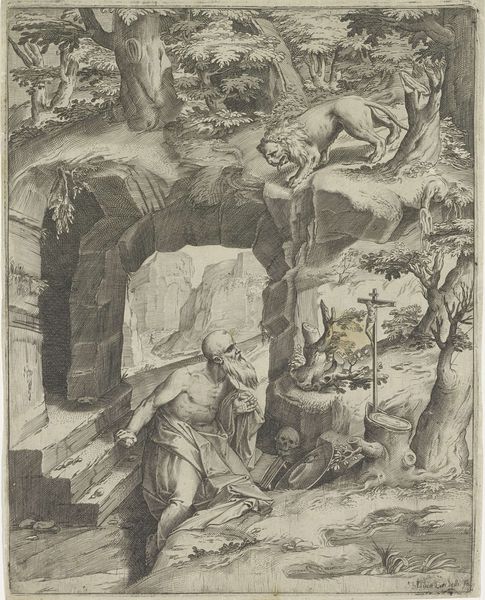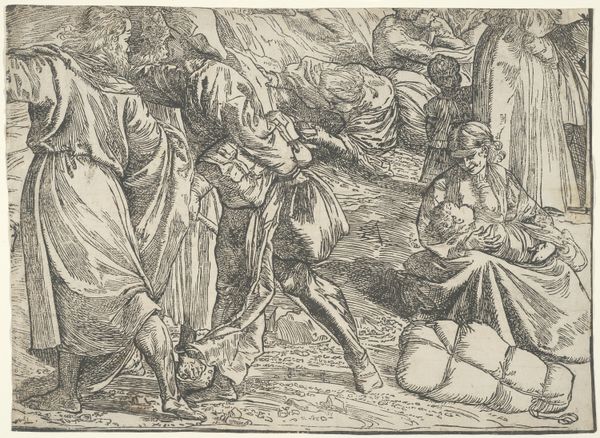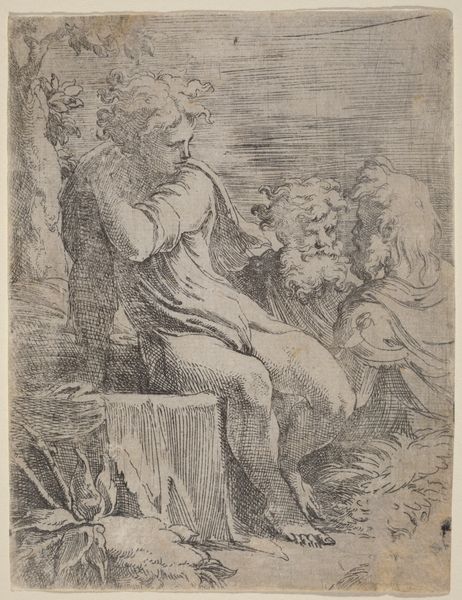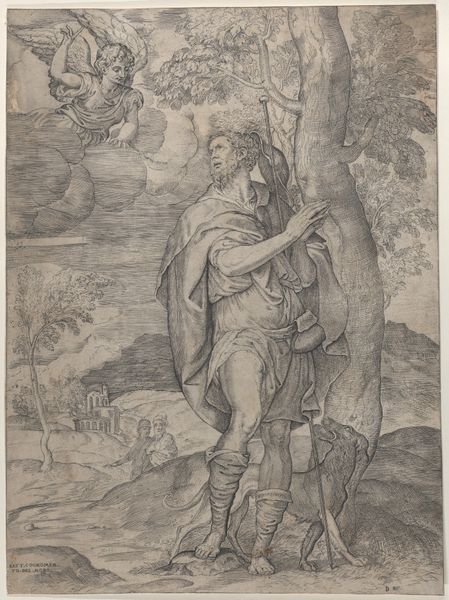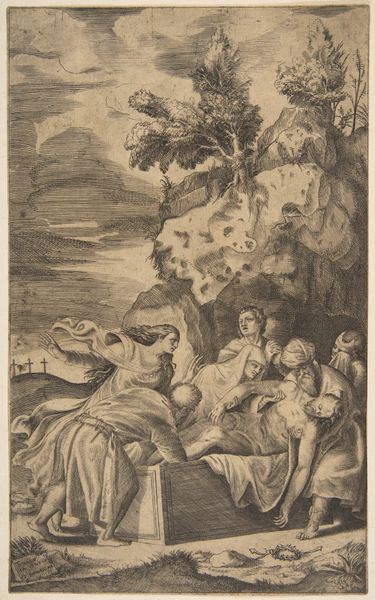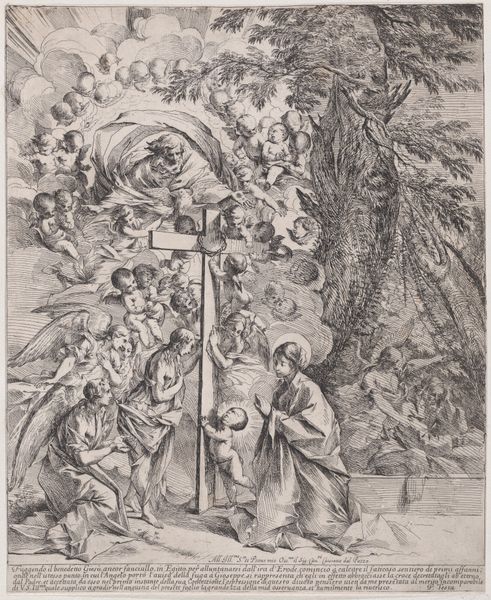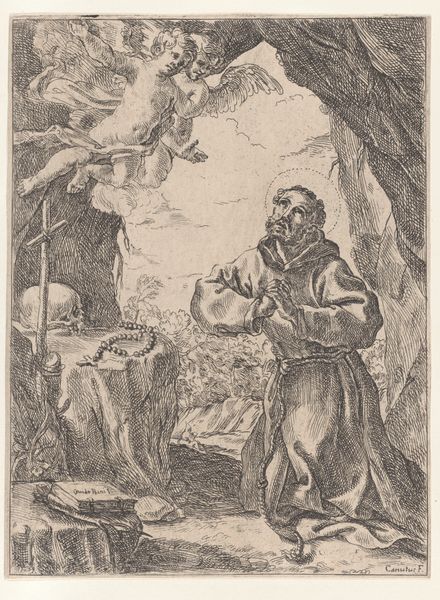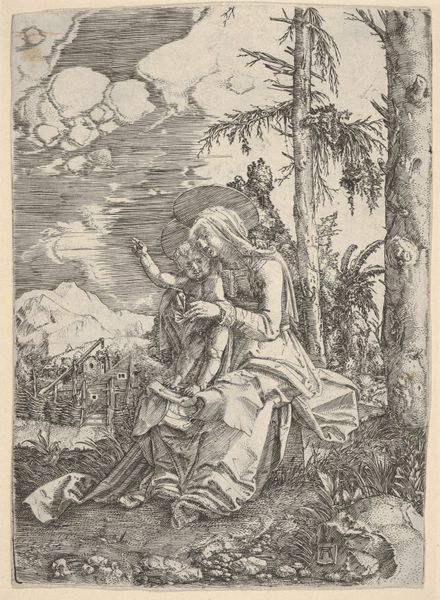
H. Theresia en H. Nicolaas van Tolentino biddend voor de zielen in het vagevuur 1645 - 1711
0:00
0:00
erasmusquellinus
Rijksmuseum
print, etching, ink, engraving
#
ink drawing
#
baroque
# print
#
etching
#
ink
#
history-painting
#
engraving
Dimensions: height 376 mm, width 302 mm
Copyright: Rijks Museum: Open Domain
Editor: This engraving, "H. Theresia en H. Nicolaas van Tolentino biddend voor de zielen in het vagevuur," created between 1645 and 1711 by Erasmus Quellinus, depicts Saint Theresa and Saint Nicholas of Tolentino praying for souls in purgatory. The scene feels dramatic, split between the earthly realm and the fiery suffering below. What draws your eye when you look at this work? Curator: I’m immediately drawn to the labour-intensive process of printmaking in creating this image, the sheer amount of work required to produce this level of detail through etching and engraving. Look at how Quellinus has translated painterly effects into the language of the print. Consider the socio-economic factors. Prints like these were relatively accessible. What kind of labor went into the production of the paper itself? Editor: That’s a great point, the detail is incredible for a print. What does it suggest that it's accessible? Curator: It points to a growing market for religious imagery beyond the wealthy elite, suggesting a broader dissemination of theological ideas. Think about the workshops where these were made. Multiple artisans likely contributed to different stages of the production, creating a division of labor inherent to the material reality of printmaking. Is this a purely religious act or early industrial production? How are these concepts related to our interpretation of this artwork? Editor: I never really considered all of that before. I was focused on the imagery, but thinking about the process and the economic side makes me see it in a whole new light. Curator: Exactly. The material realities – the ink, the paper, the techniques of engraving – shaped not just the appearance of the work, but also its accessibility, its audience, and its social function.
Comments
No comments
Be the first to comment and join the conversation on the ultimate creative platform.
